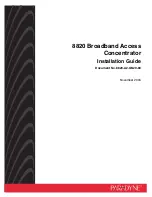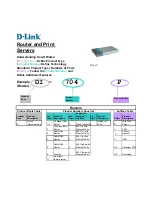
1-6
1) Look at the protocol type field in the rules first. A rule with no limit to the protocol type (that is,
configured with the
ipv6
keyword) has the lowest precedence. Rules each of which has a single
specified protocol type are of the same precedence level. Compare packets against the rule with
the highest precedence.
2) In case of a tie, look at the source IPv6 address prefixes. Then, compare packets against the rule
configured with a longer prefix for the source IPv6 address.
3) If the prefix lengths for the source IPv6 addresses are the same, look at the destination IPv6
address prefixes. Then, compare packets against the rule configured with a longer prefix for the
destination IPv6 address.
4) If the prefix lengths for the destination IPv6 addresses are the same, look at the Layer 4 port
number ranges, namely the TCP/UDP port number ranges. Then compare packets against the rule
configured with the smaller port number range.
5) If the port number ranges are the same, compare packets against the rule configured first.
The comparison of a packet against an ACL stops immediately after a match is found. The packet is
then processed as per the rule.
IPv6 ACL Step
Effective Period of an IPv6 ACL
Effective Period of an IPv4 ACL
.
Содержание S5500-SI Series
Страница 161: ...3 10 GigabitEthernet1 0 1 2 MANUAL...
Страница 220: ...1 7 Clearing ARP entries from the ARP table may cause communication failures...
Страница 250: ...3 3 SwitchB system view SwitchB interface vlan interface 1 SwitchB Vlan interface1 ip address dhcp alloc...
Страница 310: ...i Table of Contents 1 Dual Stack Configuration 1 1 Dual Stack Overview 1 1 Configuring Dual Stack 1 1...
Страница 331: ...1 7 1 1 ms 1 ms 1 ms 1 1 6 1 2 1 ms 1 ms 1 ms 1 1 4 1 3 1 ms 1 ms 1 ms 1 1 2 2 Trace complete...
Страница 493: ...2 8...
Страница 1111: ...1 10 Installing patches Installation completed and patches will continue to run after reboot...
















































